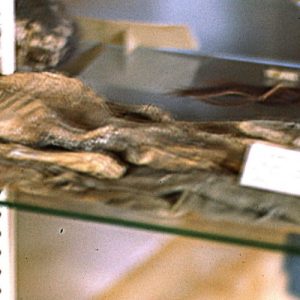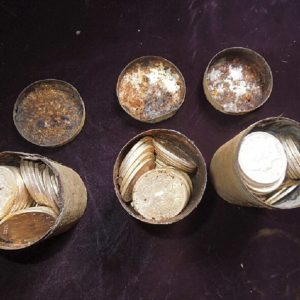Fossil has been unveiled at the National Museum of Scotland.
170 million-year-old fossil of flying reptile unveiled
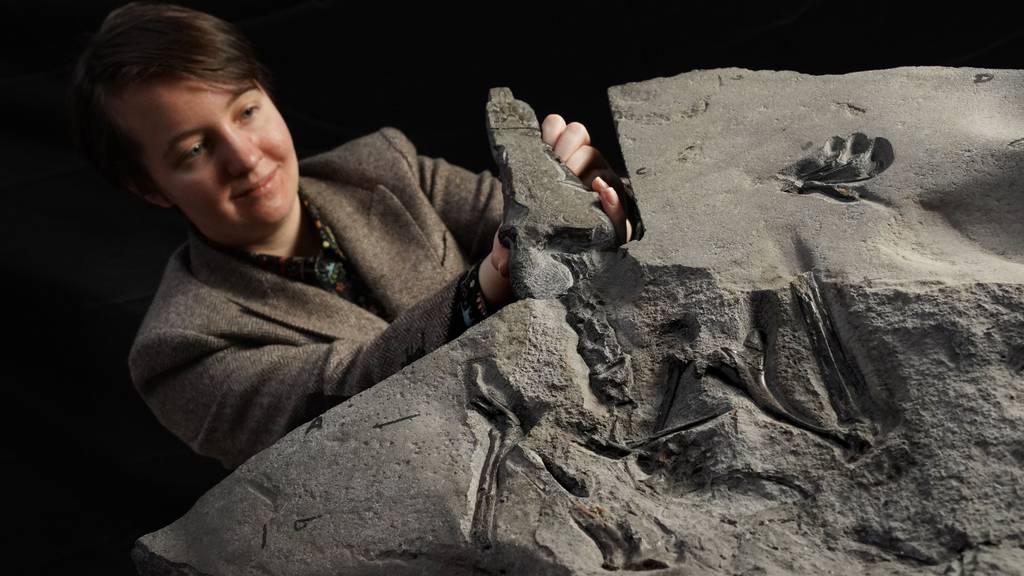
The most important pterodactyl fossil find in Britain in around 200 years has been put on display for the first time.
It dates back more than 170 million years and has been described as the “discovery of the century”.
It has been unveiled at the National Museum of Scotland.
The prehistoric specimen has been hailed as the best-preserved skeleton of a pterosaur – a huge flying reptile – and the largest ever discovered from the Jurassic period.
The giant winged creature, more popularly known as pterodactyls, is closely related to dinosaurs and had an estimated wingspan of more than 2.5 metres, similar to that of an albatross today.
The fossil, which was found during a National Geographic Society-funded excavation on the Isle of Skye in 2017, will now be added to the museum’s collection, where it was unveiled on Tuesday.
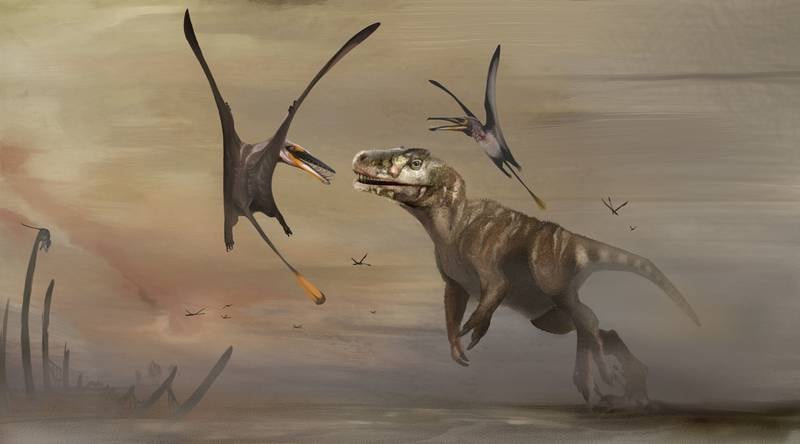
Speaking about the ground-breaking discovery, University of Edinburgh PhD student Natalia Jagielska, who was lead author in a new paper featuring the fossil, described the finding as “a discovery of the century”.
Posing proudly with it for photos, Ms Jagielska said: “The finding has pieced together a huge gap in fossil records for us.
“I am glad that the world is going to see one of the best pterosaurs that has been discovered in centuries.
“Britain hasn’t seen this kind of preservation of pterosaurs in 200 years.
“It’s a discovery of the century, this doesn’t really happen.”
The palaeontology expert said the last time such findings were made was during the days of Mary Anning – a palaeontologist celebrated for her discoveries of Jurassic fossils – in the early 1800s.
Holding a much smaller stuffed toy version of the reptile on her shoulder, Ms Jagielska said the fossil shows that the pterosaur was “much bigger and more diverse than we expected during the Jurassic period.”
“They were also very goofy looking creatures,” she laughed.
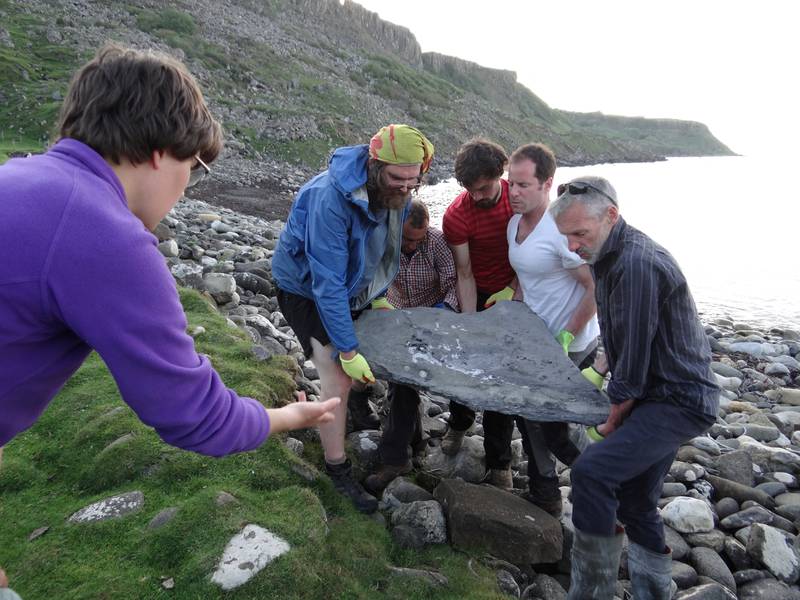
“The discovery is also super interesting because this fossil shows there was clearly a lot of evolution going on in that time period.
“And it shows that Scotland is a key piece to discovering that evolutionary variation, the best place in the world, it might be.
“If these delicate bones of the pterosaur can be preserved well, that means other creatures can, and if other creatures can, we might fill the gap in records of the Jurassic period just in Scotland alone.”
Professor Steve Brusatte, a palaeontologist and professor at the University of Edinburgh, explained how the “superlative” fossil was found on the trip which he led about five years ago.
“It was a very stressful excavation as we were battling the tides to cut this thing out the rock with diamond-tipped saws,” he said.
“We actually lost if for a moment as the waves lapped up over it and we had to come back near midnight to get the most of it out.”
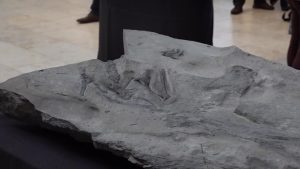
He said the fossil, with bones “feather light” and “as thin as sheets of paper”, took several days to cut from rock.
Running his hand over part of the reptile’s jaw found in the historic specimen, Prof Brusatte described the discovery as “the best thing we’ve found on Skye”.
“I have been bringing my teams to Skye from Edinburgh for about a decade now, but this one takes the prize.
“This is a crown jewel fossil and is a beautiful, exquisite skeleton.
“The thing about working on Skye is we are always battling the tides, so it’s a very challenging place to work.
“But when you find something like this, it’s so worth it.”
The painstaking excavation was led by Dugald Ross, of Staffin Museum, which he built himself in the 1970s when he was just a teenager.

Amelia Penny, a post-doctoral researcher at the University of St Andrews, was the one who first discovered the fossil during Prof Brusatte’s field trip after spotting its jaw protruding from limestone at Rubha nam Brathairean (known as Brothers’ Point).
“I knew I had found something interesting,” Ms Penny said, recounting the jaw-dropping moment.
“There were other teams on the beach with me that day and they said: ‘We think this could be a pterosaur skull, we think this could be really significant’.”
Speaking at the fossil’s unveiling on Tuesday, Ms Penny said: “I feel proud to have spotted it.
“I also need to be humble about it, there was an element of chance with me finding it.
“But I feel very proud, I feel very lucky.”

The species found is a new species of pterosaur, Professor Brusatte said, and experts have called it Dearc sgiathanach (pronounced jark ski-an-ach), which translates as “winged reptile” and also references the Isle of Skye, whose Gaelic name means “the winged isle.”
The specimen will be the subject of further study by Ms Jagielska, which aims to reveal more about Dearc’s behaviour, particularly how it lived and flew.
Pterosaurs were the first vertebrates to evolve powered flight, some 50 million years before birds.
They lived throughout the Mesozoic era – the so-called age of reptiles – as far back as the Triassic Period, about 230 million years ago.
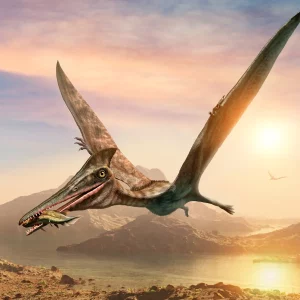
In the later Cretaceous Period – the time of Tyrannosaurus rex and Triceratops – and immediately before the extinction event that wiped out the dinosaurs 66 million years ago, pterosaurs grew to the size of fighter jets.
However, they were previously thought to have been much smaller during the Jurassic Period.
Fragmentary specimens from England had hinted at the possibility that larger pterosaurs lived during the Jurassic Period and Dearc sgiathanach is the first complete specimen to confirm this.
The unique fossil will now be added to National Museums Scotland’s collection and studied further.



